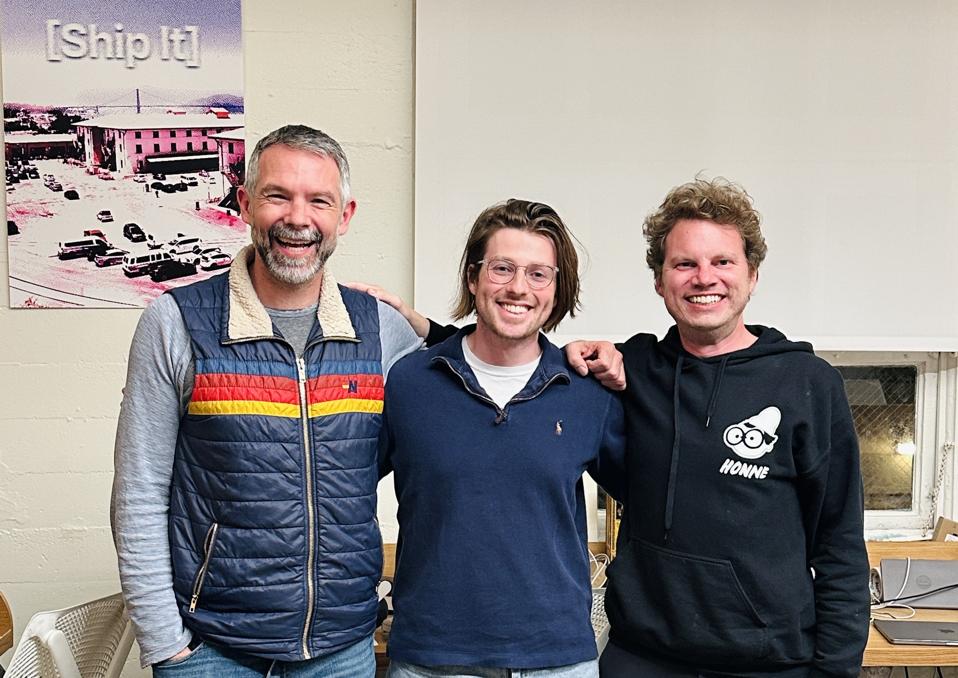Brent Bushnell and Aidan Wolf think they have solved one of the toughest problems in location based entertainment. Traditional attractions require fixed real estate, heavy hardware, and large upfront investment. DreamPark, their new mixed reality platform, replaces walls and rides with software delivered through a headset and a simple scanning workflow. The result is a portable theme park that installs in hours and works indoors or outdoors. They are bringing it to IAAPA (International Association of Amusement Parks and Attractions) annual gathering next week.
The idea came out of Two Bit Circus, Bushnell’s long running Los Angeles micro amusement park. Wolf and a small group of XR developers were using the Two Bit offices as a testing ground for experiments that pushed passthrough mixed reality. One early prototype was a racetrack built in a parking lot using hacked headsets and drift trikes. Bushnell still remembers the moment his watch captured a heart rate of 150 as he pedaled through a digital world that matched the asphalt under his wheels. That was the point when he felt DreamPark could become a company.
Two years later they are taking their production version into the industry’s biggest trade show. The system works on Quest headsets and now includes a companion mobile app for operators. That app turned out to be essential. Wolf said operators do not want to wear a headset while managing guests. The phone interface gives them maps, setup tools, camera feeds, and controls without taking their eyes off the venue. Teen workers can pick it up in minutes.
DreamPark’s first commercial deployment opened in August inside the Samanea Mall in Long Island. The operator there had only five thousand square feet of leased space but could use the public areas of the mall once DreamPark scanned them. That expanded the play zone to twenty thousand square feet at no cost. Guests can use a headset or a phone. Parents can record what their kids are seeing. The app watermarks the videos and encourages sharing, which Bushnell said helped drive traffic during their summer tests.
The business model is straightforward. Operators buy tickets wholesale from DreamPark for about five dollars and resell them for fifteen to thirty, depending on the venue. The hardware requirement is minimal because the attraction lives in the headset. A road case fits in a trunk and unlocks a full themed environment. Arcades, fun centers, zoos, aquariums, museums and resort properties are the early targets. All of them have heavy foot traffic and occasional unused space. Bushnell said most traditional attractions require a six figure investment and cannot move. DreamPark installs for a few hundred dollars and can travel to another site for a private event.
The content slate is larger than what they plan to show at IAAPA. Over the past two years Wolf’s team built several parks. Super Adventureland is the most polished and will be the focus of the booth. In development are a wizard themed park, a monster catching and adoption world, and a science fiction environment. The expansion model looks less like rotating a single ride and more like building a small universe. A mall operator can run multiple DreamPark zones across available space. Guests move from one region to another the way they navigate a real park.
Mixed reality is central to the experience. Bushnell said passthrough gives them more control over lighting and scale. Lava pits look like they open in the floor. Creatures appear to run across the pavement. Wolf said the headset form factor supports longer sessions for kids and adults. Their longest single play session so far was an eleven year old who stayed in for ninety minutes.
The company raised a pre seed round in March. They expect the market response at IAAPA to shape the next stage. For Bushnell, the attraction is simple. DreamPark lets operators monetize empty space and gives guests the feeling of stepping into a world that can be delivered anywhere with a headset.





